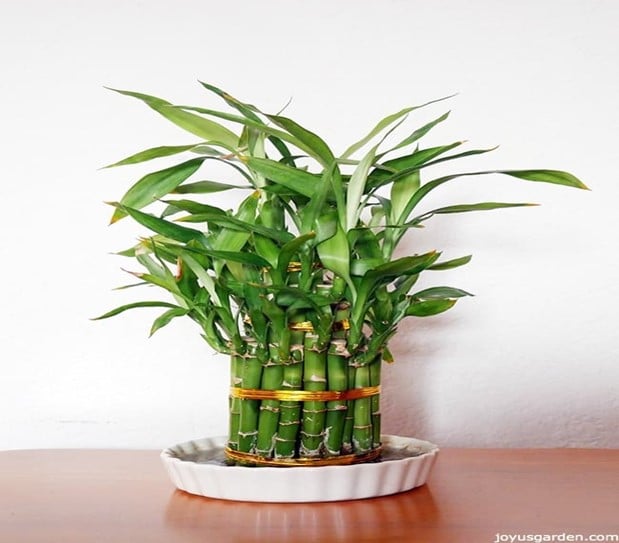Table of Contents
Bamboo is a very versatile and exotic plant that you can have in your garden. They are desirable and look beautiful.
They give structure and definition to your garden. They can be used to fence your garden and become an attractive feature to your garden.
However, as bamboo proliferates and becomes thick and lushly in no time, it may look unattractive if not appropriately maintained.
Caring for a bamboo plant is simple and easy. If you have a Bamboo plant and need some tips to grow it, this article is just for you.
There are different varieties of Bamboo plant which requires different types of climatic conditions to grow.
These are commonly classified as Clumpers and Runners. Let us first understand in brief the difference between these two varieties.
Clumping Vs. Running Type Bamboos

Clumping Bamboo
These Bamboo plants display pachymorph or sympodial components to their rhizome structure. Here the rhizome turns upward to form a culm.
Even though there are cold hard, and tropical varieties of clumpers, their growth areas are minimal.
These are narrow at the base and weep over at the tops, leaving huge gaps between each planting.
Thus, although they can be used for screening purposes, they do not provide much privacy.
Running Bamboo
These Bamboo plants exhibit leptomorphic or monopodial rhizomes. They are characterized by an independent underground stem from which aerial culms develop.
From cold climate to the warmth of tropics, they are found in almost all climate zones.
Runners can provide serene privacy or a bamboo groove to walk.
They are low maintenance varieties and are useful in providing privacy in urban landscapes.
Let us now look at some tips that you can use for growing bamboo in the UK.
Choosing A Perfect Location
Bamboo, scientifically known as Bambusoideae, being a versatile perennial plant, can survive in many conditions. They can thrive in moist and well-drained soil. They can also tolerate many soil types. However, for its fastest growth, it needs full sunlight and slightly acidic, fertile soil.
Bamboos can grow even if one of these conditions is provided to them. While choosing a perfect plant, make sure you pick a healthy one with vibrant green color without blemishes or bruises.
Planting Your Bamboo Plant
After choosing the right place for planting your bamboo plant, dig a hole that is twice as wide as the root ball of your Bamboo plant. Set it in the hole and spread its roots out. Backfill the hole, gently tamping down the soil. Water the hole thoroughly, filling any remaining air pockets. This will help the plant grow faster, and as the surrounding soil is loose, it allows the root and rhizomes to proliferate.
Plant it in spring so that the energy stored in the bamboo rhizomes can be used to produce healthy, new canes in summer. This way, the rhizomes then produce the roots before the plant enters dormancy from autumn to spring.
Caring Your Plant
Once the plant is established, it is easy to take care of it. Following are a few points you need to take care of if you want your plant healthy.
Sunlight Requirement
Bamboo produces most of its foliage when there is maximum sunlight. It grows well in full sunlight. Ideal temperatures are in the range of 60- 70 degrees. They enjoy bright indirect light but can tolerate low light conditions as well.
Remove Dead and Yellow Leaves
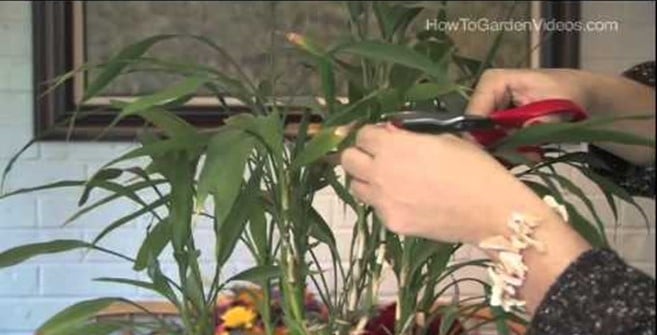
Yellowing of leaves can be seen or is caused due to insufficient water supply, too much soil or fertilizer, or too much sunlight. If you observe yellow leaves in your plants, make sure you trim them off or remove the leaf altogether.
To remove the yellow leaves, use rubbing alcohol or vinegar sterilized pair of pruning shears or sharp scissors to cut the yellow part off. Or remove the whole leaves by pulling them down off the stalk from the base of the leaf.
Tie the Stalk of The Plant
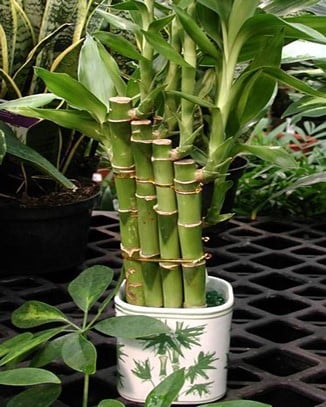
To hold the bamboo together, tie stalks using a gold or red ribbon. It will look more put together and is also believed as an extra symbol of good fortune. Put some pebbles at the bottom to finish off the look.
Water Requirements
Bamboo needs lot of water, but it also requires well-drained soil. You should also try and avoid watering for clumping types to the area around the base. These running-type bamboos can be very invasive. Water weekly until your plants are well established. If you have newly planted bamboo, provide some shade for first two weeks after planting.
Propagate the Plant.
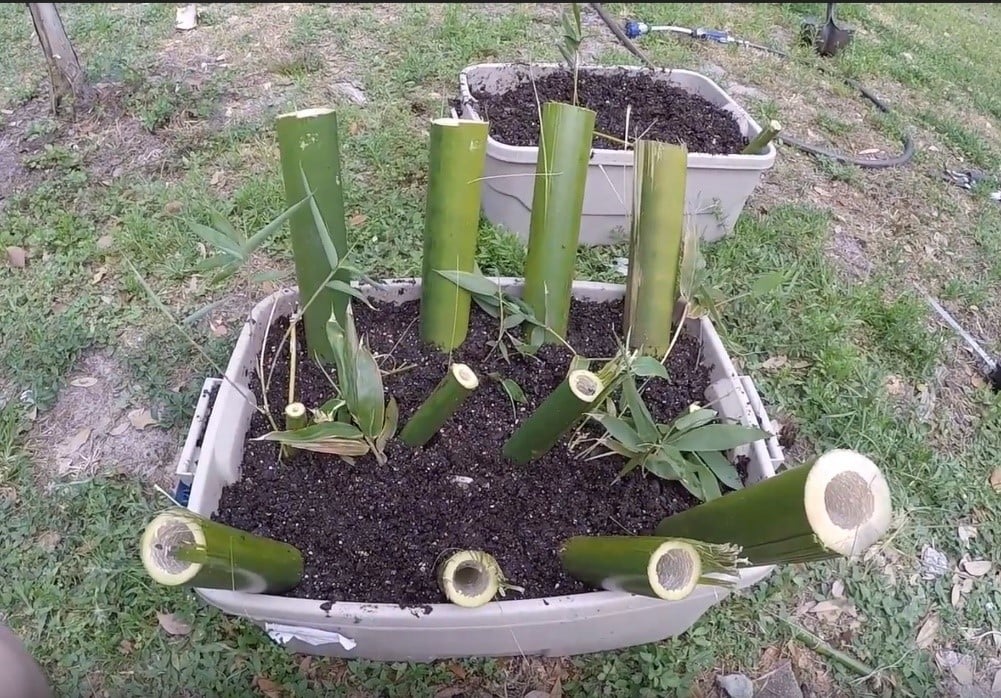
If you do not want your bamboo to get too crowded, you can cut one or two stalks that grows too tall and replant them. Take the longest stalk and remove the smaller leaves at the top of the shoot. Cut the shoot using sterile scissors or knife such that at least two nodes, which are the raised part of the stem, are on the cutting.
Keep the shoot in a bowl of clean and distilled water in a shady area for one to two months till it begins to sprout roots. As soon as you start seeing roots, replant it in the same pot as your bamboo.
Controlling the Growth of Bamboo Plant
Some bamboo plants, like that of running type, can be aggressive. They have vigorous growth and require a barrier. Consider installing a barrier only if the plant is already established.
Make sure that the barrier is surrounding the plant completely and is at least 2 to 3 inches deep and 2 to 3 inches above the ground. To prevent it from escaping cut back any bamboo growing over the top of the barrier. Keep in check the top of the barrier at least once a year.
Also, before planting any variety, make sure to check your local extension office beforehand to see if planting running varieties are allowed, as in some areas these are banned, however clumping types are fine to plant.
Sensitivity to Chemicals
Bamboo plants are very sensitive to chemicals. Tap water has chemicals and salts in it which may harm the plants. Thus, if you are using tap water to mist or water your plant, leave it overnight to allow the chlorine to evaporate.
The leaves of the bamboo plants turn brown if excess fluorides are present in the water. Instead of using tap water, you can try using rainwater or distilled water.
However, to stimulate the growth of the plants, fertilizers rich in nitrogen, and slow-releasing formula should be applied to the soil in the spring.
Choosing the Right Container
Choosing the right container is equally important as other factors while considering the growth of the plants. The pot you are using to plant bamboo should be 2 inches larger in diameter than the plant.
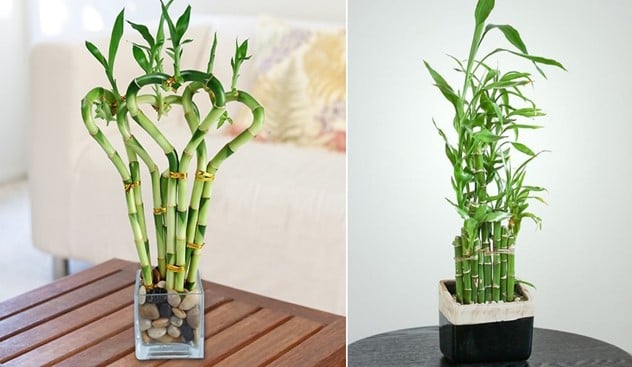
You can use clear pots for water. It will show off your plant and pebbles and looks beautiful, but make sure to keep it out of direct sunlight. It looks attractive and provides a humid microenvironment for the bamboo plant.
You can use ceramic pots to grow bamboo plants either in pure water or in soil. If you are planting it in soil, make sure to put a drain hole in the pot. So, these were few points you should consider while planting your bamboo plant.
But we are not done yet, here are some bonus tips that you can use for growing bamboo.
Bonus Tips
- To provide enough moisture to your bamboo plant, turn a gentle fan onto it a few hours a week.
- Bamboo plants grow well in slightly acidic loamy soil.
- Do not rake up the bamboo leaves from the bottom of the plant, and they keep the roots moist and protected. They return useful nutrients to the soil as they fall off.
- Add a layer of mulch to the bamboo roots that will help keep your plant growing strong.
- In spring, a layer of compost or balanced fertilizer can be applied.
Conclusion
As we have reached the end of this article, you now have many tips that you can use to grow your bamboo plant. Bamboo plants do not need much care but with little effort, you can grow your plant healthy. Due to its growing popularity, more gardeners wonder what the best growing conditions are. And this article just answers that question.
Bamboo Plant grows in diverse climate, from hot tropical regions to cold mountains. Bamboo is a fast-growing plant and does not require much maintenance. But it is still important to make sure what type of soil you are using and what nutrients are being to the plant.
Regardless of what you plant, it is very important to know what to plant where for success in the garden. So, enjoy planting your Bamboo plant and watch it grow healthy.

